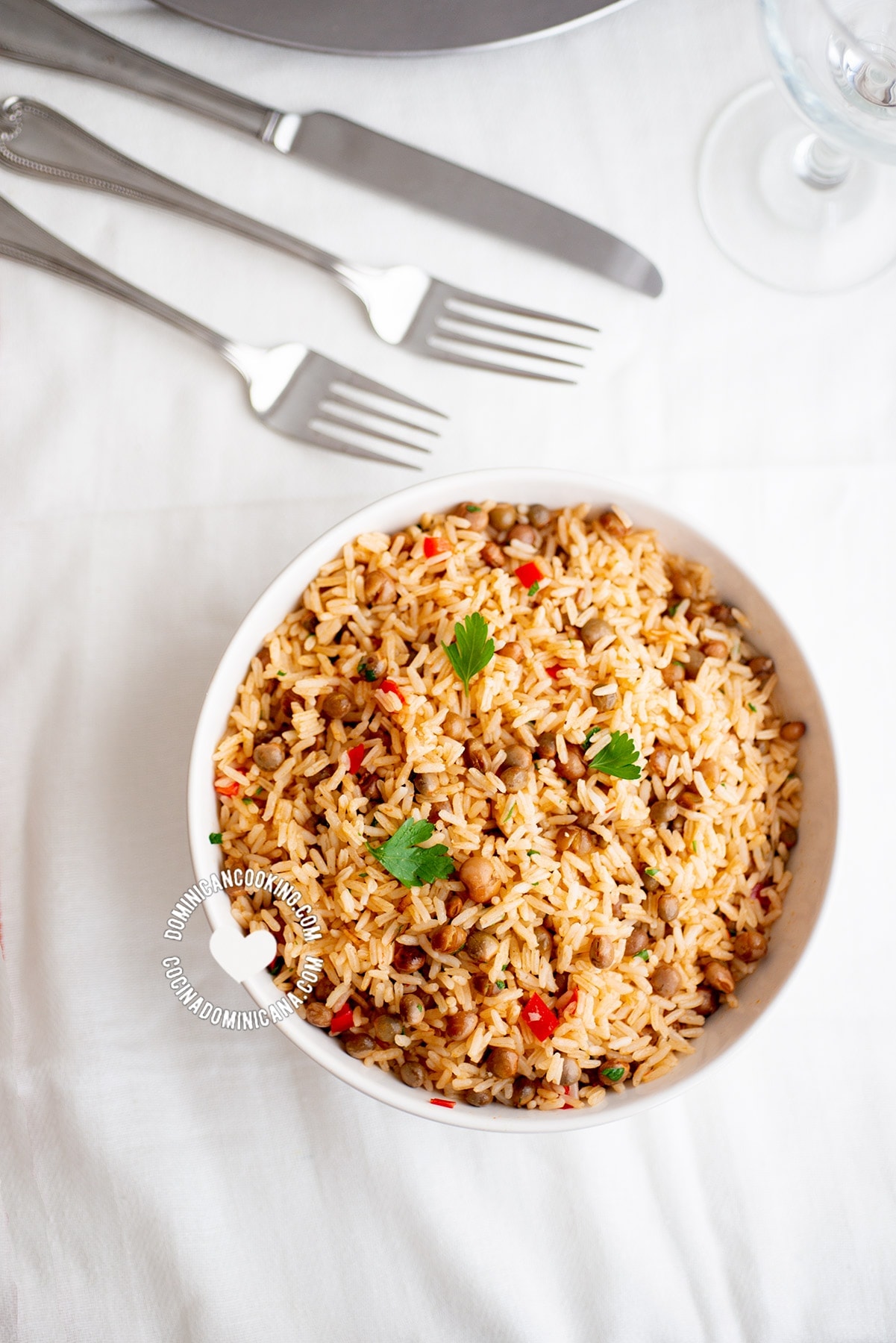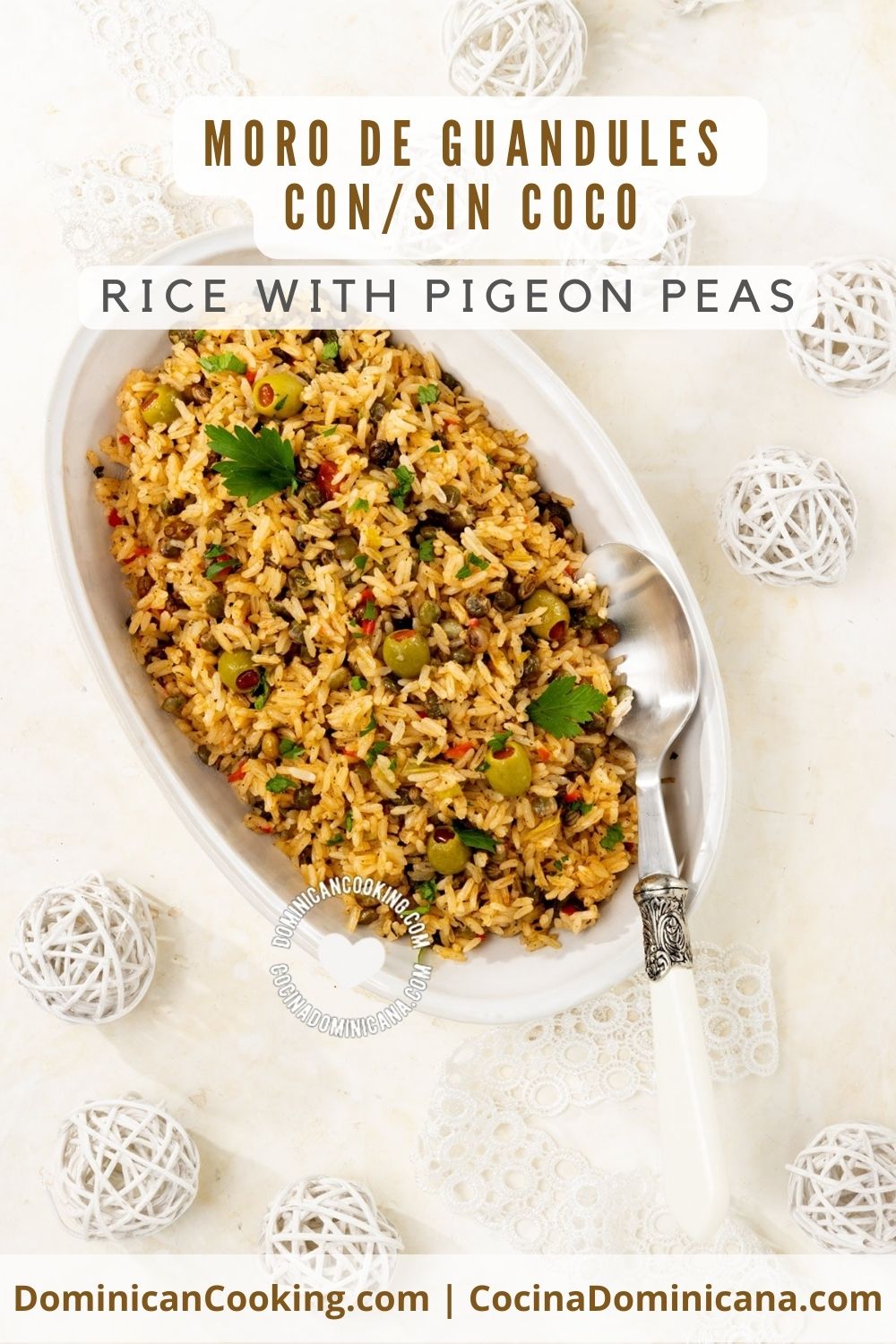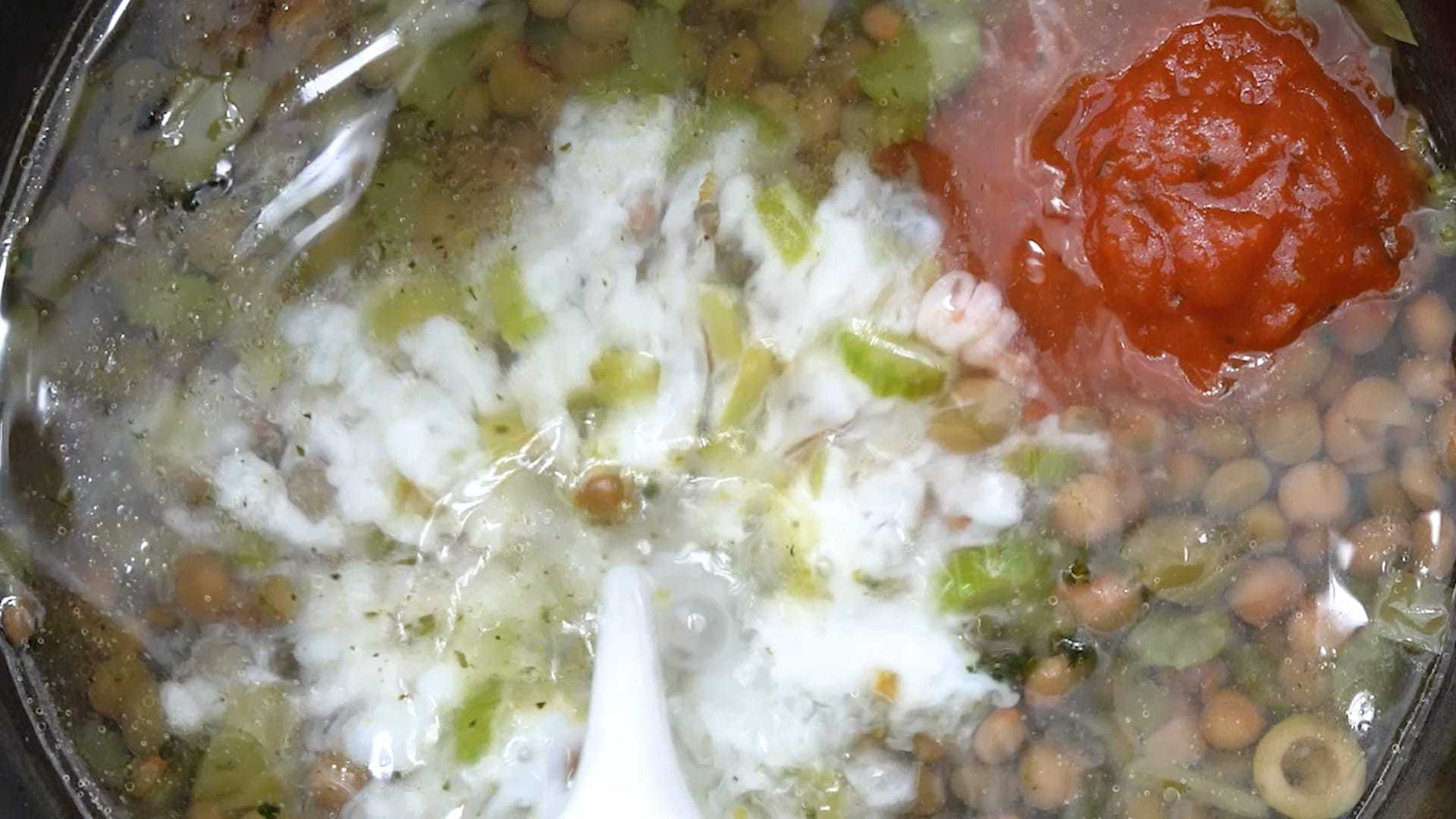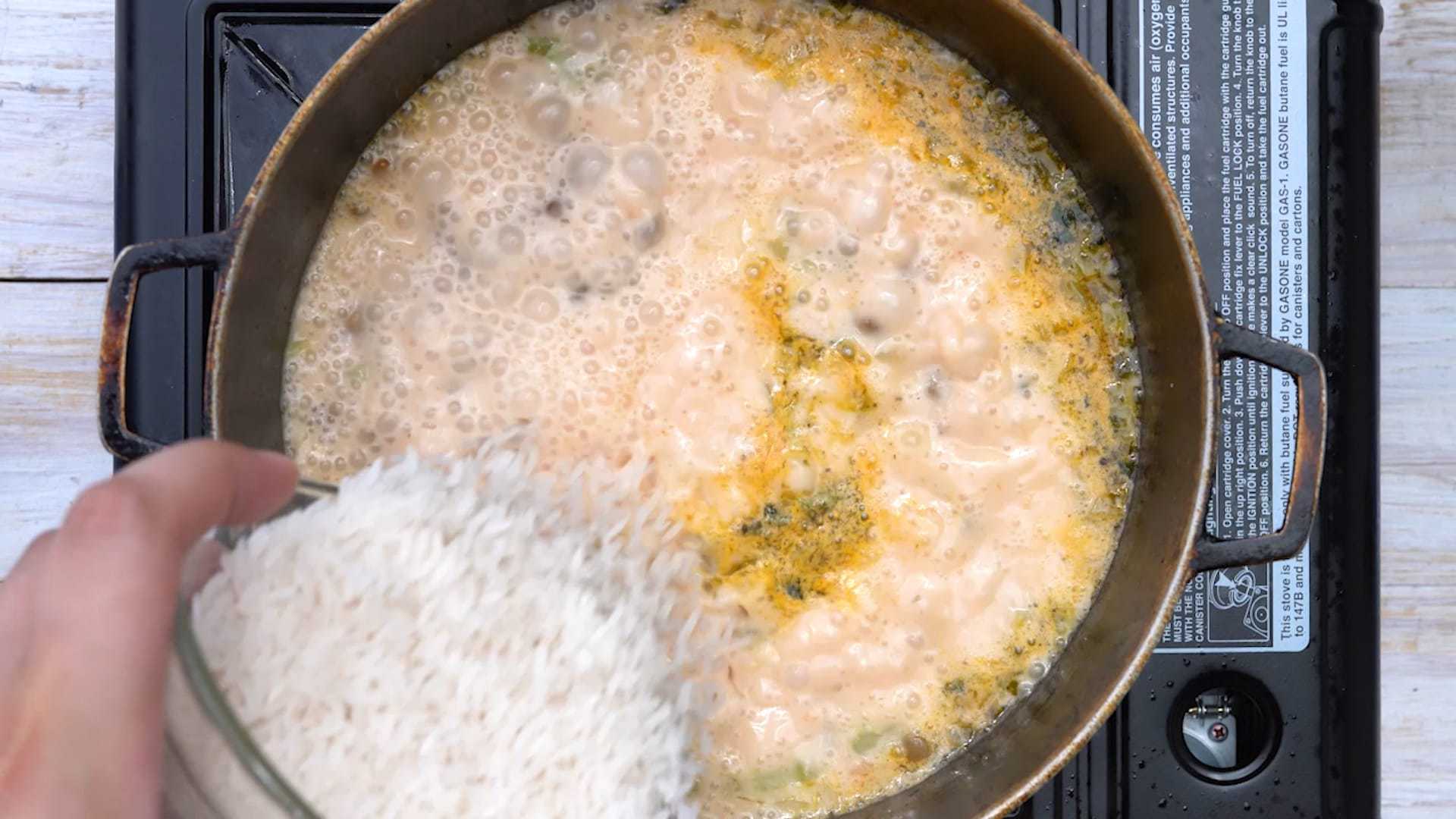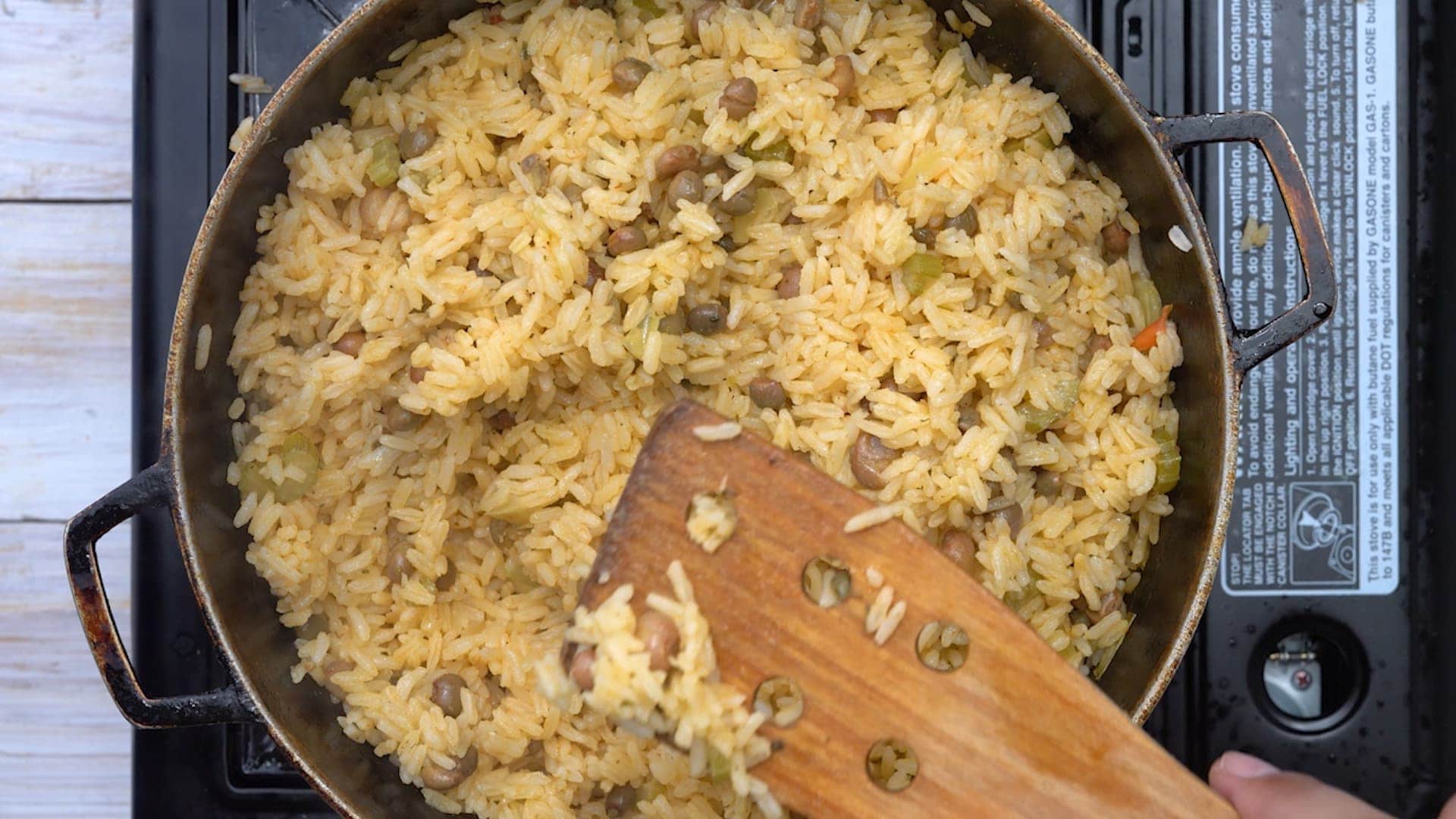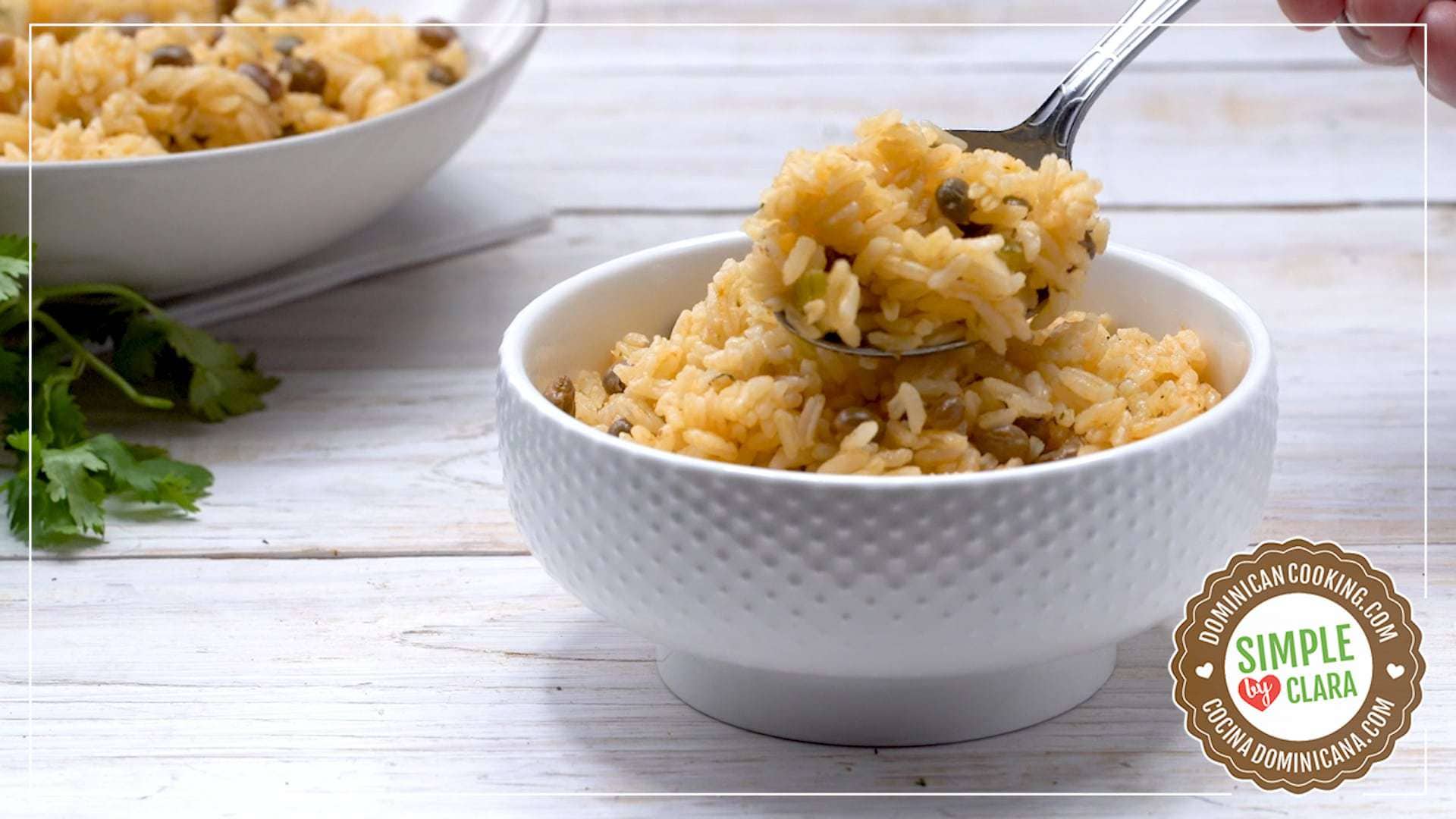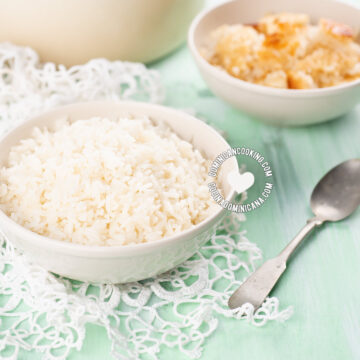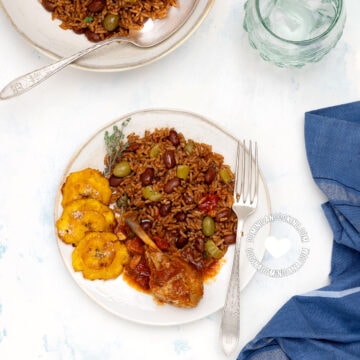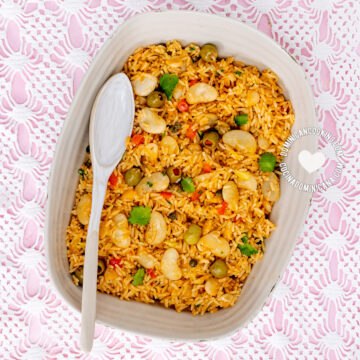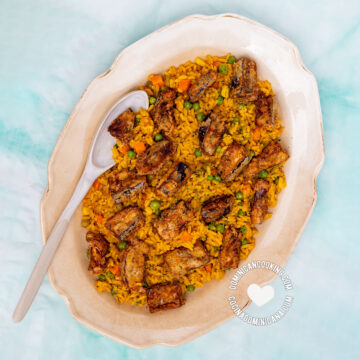We show you how to make the classic Moro de guandules dominicano (rice and pigeon pea) with and without coconut. Moro de guandules con coco is one of my favorite rice dishes and a fantastic example of Samana cookery, which all Dominicans enthusiastically adopted.
By - Last reviewed . Published Dec 26, 2010
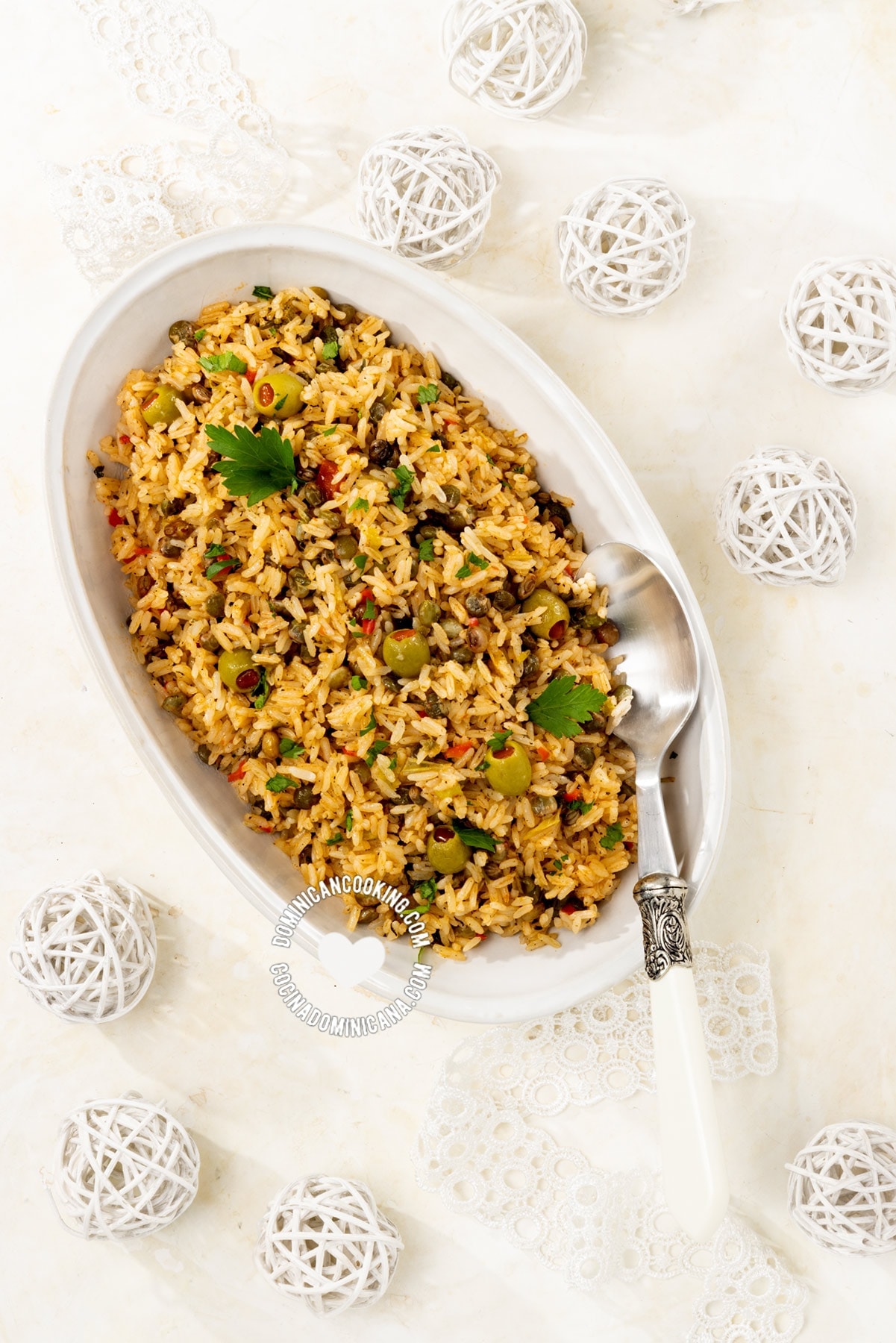
Why we ❤️ it
The first time I ate moro de guandules con coco (rice, pigeon peas, and coconut) I was 12, and fell in love. It was all new to me, and I was smitten. That was my first trip to Samaná. This rice and pigeon pea recipe is an obligatory addition to any special Dominican-style meal and part of our traditional Dominican Christmas dinner.
But let's take a moment to talk about guandules (pigeon peas) because that is one of the most beloved ingredients in Dominican cuisine.
What are guandules?
Guandules (Cajanus cajan) – known in English as pigeon peas – are a type of legume native to the Indian subcontinent and very popular in the Spanish Caribbean.
The taste of guandules has been variously described to me as "nutty" or "ashy". I would describe the taste more as "smoky". The closest to legume I can think of in terms of taste is mung beans.
Guandules are also popular in South India (thank you, Rajesh, for the tip in the comments!)
Read more about guandules name and culture.
Moro de guandules con coco
There is not a corner of our Republic where guandules are not known. But in Samaná somebody had a stroke of genius: to combine pigeon peas with coconut. This is possibly a natural progression from the fact that Samaná is covered from corner to corner with coconut groves.
Another very popular pigeon pea recipe with coconut milk is guandules con coco.
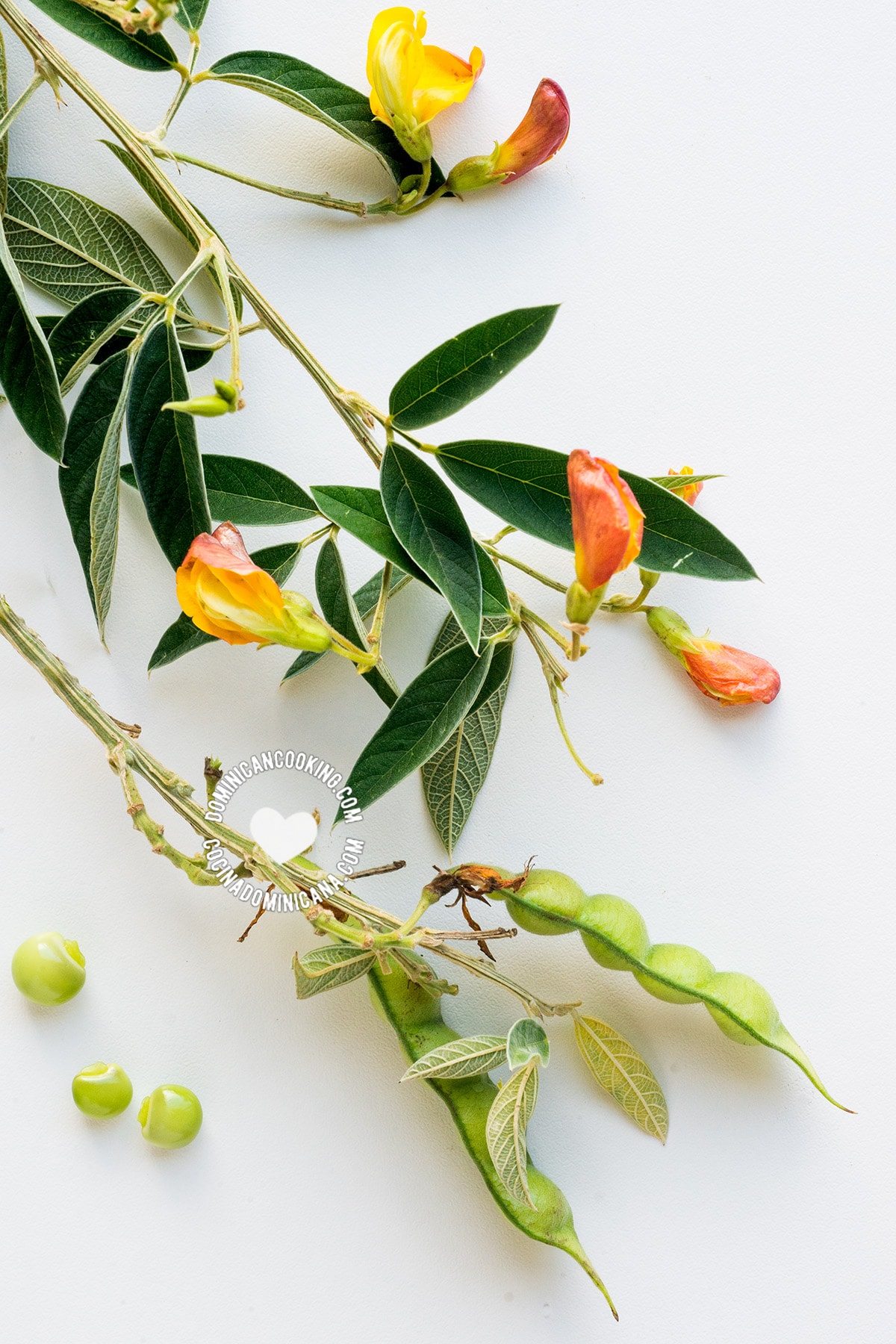
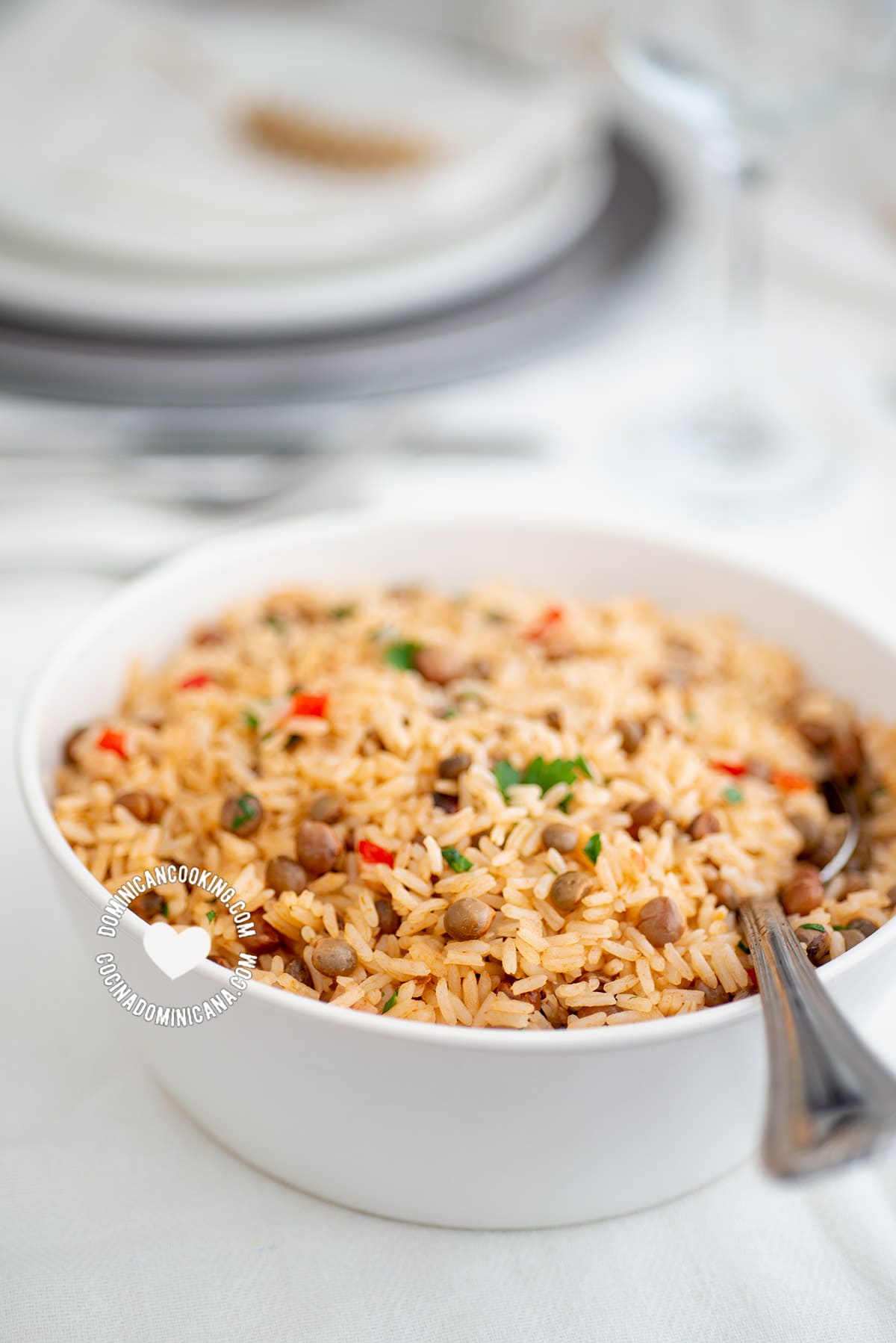
Guandules and moro de guandules
Serving suggestions
We serve it with our Christmas feast and everyday meals. My favorite dishes to go serve with moro de guandules are Pollo guisado (braised chicken), Res guisada (braised beef), or Cerdo guisado (braised chicken), and, for a meatless option, berenjenas asadas.
A few slices of avocado are always a must, and tostones (fried green plantains) or fritos maduros (fried sweet plantain) complete this amazing meal. For a simplified lunch, I just serve it with berenjenas fritas (fried eggplants) and avocado.
Variations
To make it without coconut, just add 2 cups of broth or water instead of coconut milk when indicated in the recipe.
About our recipe
This rice with guandules is full of flavor and the buttery goodness of coconut. As I am not from Samaná, this is one of those dishes that were not part of my family heritage. However, this has since become so popular, that I don't think you can go anywhere in our country where this isn't a dish served at home.
For this Moro de guandules recipe, I went with the version of this dish I like most, but you're likely to find many more ways to make it even in Samaná. If you have another way how to make Moro de guandules, let us know in the comments.

Video
Recipe
This awesome free recipe contains Amazon affiliate links, we receive a small commission from any purchase you make at no extra cost to you. Thanks for your support!
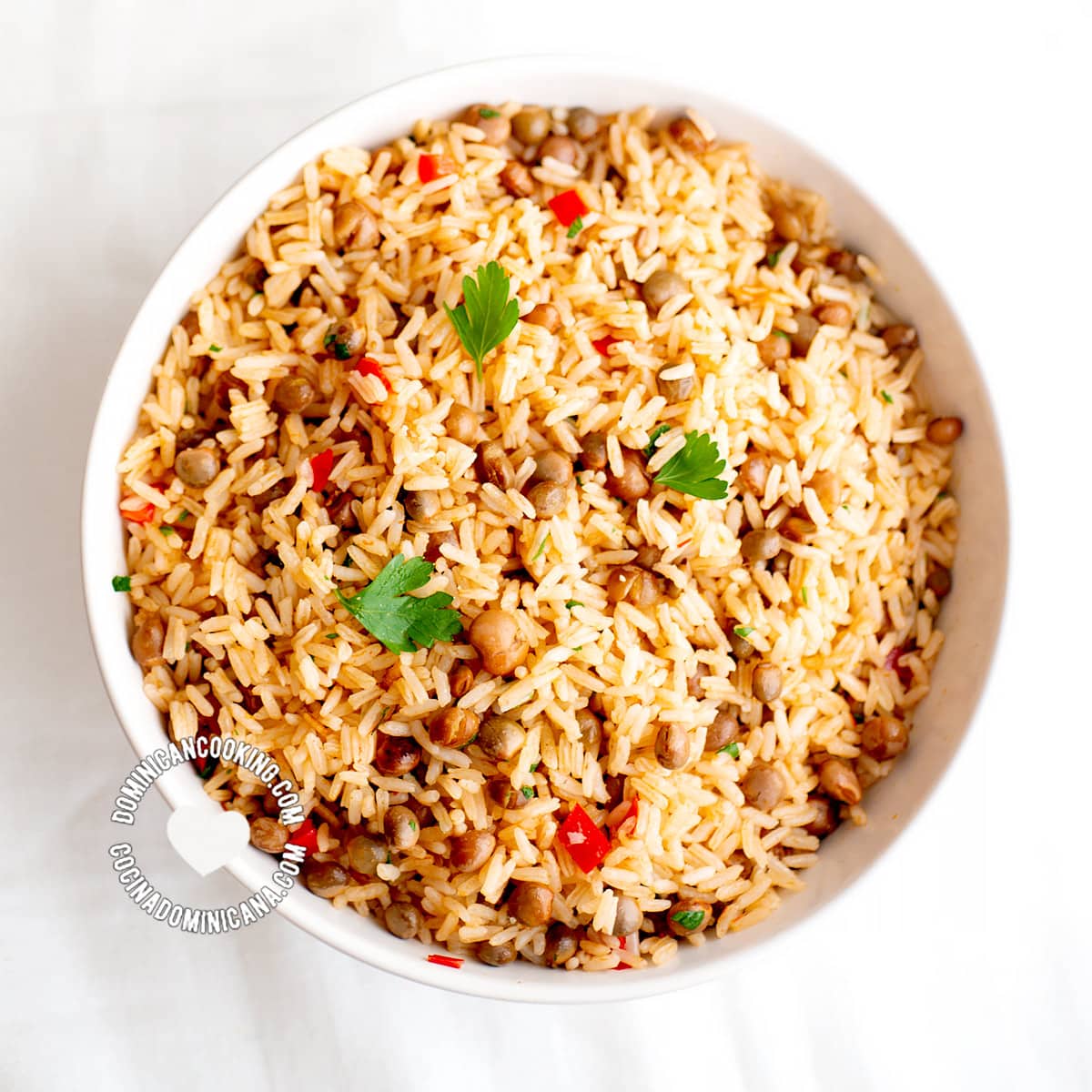
Moro de Guandules [Recipe + Video] Rice with Pigeon Peas
Ingredients
- 2 tablespoons olive oil, divided
- 1 teaspoon chopped cilantro, (or parsley)
- ¼ cup chopped celery
- ⅛ cup capers, (optional)
- 1 teaspoon mashed garlic
- 12 pitted green olives, cut into halves (optional)
- ¼ cup chopped cubanelle, (1 pepper, aprox)
- 1 oregano (dry, ground)
- 2 teaspoons salt
- 3 cup pigeon peas, (boiled or canned)
- ½ cup tomato sauce
- 2 cup coconut milk, or broth or water
- 4 cup rice, (medium grain, carolina, canilla)
Instructions
1. Cook vegetables and guandules
- Heat 1 tablespoon of oil in a 1½ gallon [6 liters] iron pot and add the cilantro, celery, capers, garlic, olives, peppers, oregano, and salt. Cook and stir for a minute. Add the guandules, also while stirring.
2. Cook rice
- Once the vegetables are well heated, add 2 cups of water, tomato sauce, and coconut milk and bring to a boil. Stir in rice and simmer over medium heat, stirring regularly, and removing as much as you can of the rice that sticks to the bottom. When all the water has evaporated cover with a tight-fitting lid and simmer over very low heat. Wait 15 minutes, uncover, and stir in the remaining oil. Move the rice from the bottom to the top so it cooks uniformly. Cover again and simmer another 5 minutes.
.3 Try rice
- Uncover and taste. The rice should be firm but tender inside. If necessary, cover and leave another 5 minutes on very low heat.
4. Serve
- Remove from the heat and serve (see suggestions above the recipe.
Cook's Notes
Nutrition
Nutritional information is calculated automatically based on ingredients listed. Please consult your doctor if you need precise nutrition information.
Want to save this recipe?
Enter your email & I'll send it to your inbox. ❤️ Plus, get great weekly recipes from me!
Guandules vs gandules
Would you be shocked if I tell you it's... neither?
In one of those "How did that start?" cases, the neighboring countries of Puerto Rico and the Dominican Republic spell this differently. So what does RAE (Royal Academy of the Spanish Language) say?
Gandul is used to describe "a lazy person", "an ancient Moroccan soldier", or "an individual from certain primitive tribes".
So, it is "guandul"!
Well, not so fast. That word is not listed in the RAE dictionary. A bit of research elucidates it: The proper word for one pea is guandú, not guandul, the plural then is actually guandúes – or guandús!
So, we're all wrong.
But you go ahead and keep calling it whatever you did before, we'll understand.
Puerto Rican vs. Dominican versions
As I mentioned above, Puerto Ricans love their guandules too. Here and there they are found, fresh, dried, and canned in every supermarket, market, and corner store. Puerto Ricans also have their own Moro de "Gandules" recipe, but it does not include coconut, and they call it "arroz con gandules".
FAQs
Gandules or guandules are a legume native to the Indian subcontinent, very popular in Southern Indian cuisine, and loved and appreciated in the Spanish Caribbean.
Arroz con gandules / guandules is "rice with pigeon peas" in English.
Yes, guandules or gandules are called pigeon peas in English.
It is guandules in the Dominican Republic, and gandules in Puerto Rico, however, the standard Spanish word for it is actually "guandúes".


